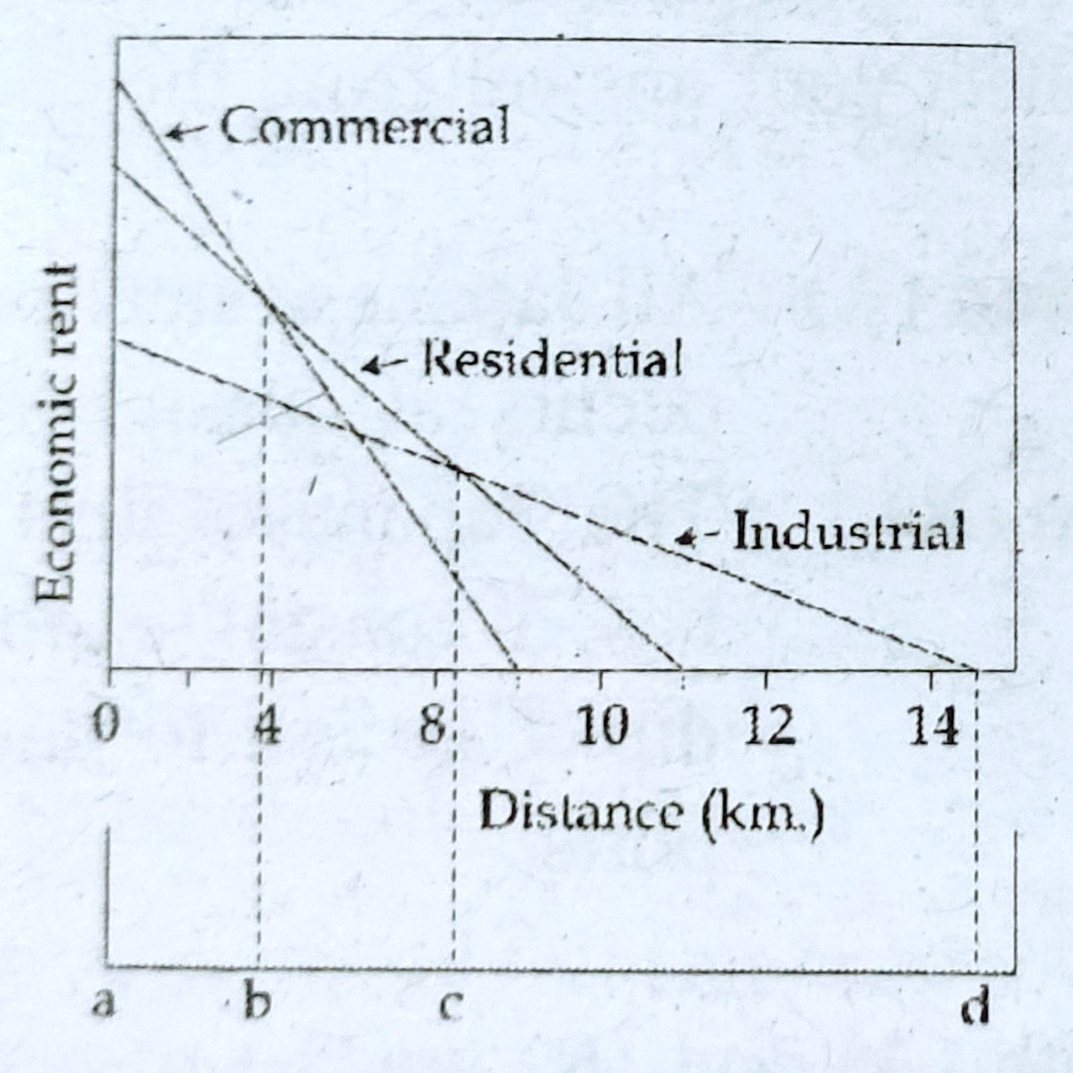 Multiple Choice Questions
Multiple Choice Questions| LIST I | LIST II |
| (a) Central place theory | (i) land use pattern in large cities developed around a number of discrete centres rather than a single centre |
| (b) Multiple Nulcei Theory | (ii) Position of the breaking point between two towns |
| (c) The law of retail trade | (iii) Hexagonal service area |
| (d) Breaking point theory | (iv) Predict the proportion of retail trade that two townwill derive from a sttlement lying between them |
a-i , b-iv , c-iii , d-ii
a-iii , b-i , c-ii , d-iv
a-iii , b-i , c-iv , d-ii
a-iv , b-ii , c-iii , d-i
|
LIST I (Zones) |
LIST II (Definitions) |
| (a) Slum Zone | (i) Lack in prestige and characterised by low grade retail stores , warehouses and wholesale trading premises and a high proportion of vacant property |
| (b) Zone of Assimilation | (ii) Extensive areas of low density housing |
| (c) Suburban Zone | (iii) Extensive redevelopement and spread of shops , offices , and hotels into former residential areas |
| (d) Zone of discard | (iv) Residential belt of considerable density surrounding the CBD |
a-iv , b-iii , c-ii , d-i
a-ii , b-i , c-iv , d-iii
a-i , b-iv , c-iii , d-ii
a-iii , b-ii , c-i , d-iv
Horwood and Boyce described which term epigrammatically as "Devoted to people , paper work and parcels" ?
Frame
Core
Periphery
Fringe
|
LIST I (Concept) |
LIST II (Definitions) |
| (a) Urban Growth | (i) relatively large and densely settled populations engaged primarily in non-agricultural economic pursuits. |
| (b) Town group | (ii) net population increase of towns and cities. |
| (c) Urban | (iii) proportionate increase of the urban population in relatively to total population in a given country. |
| (d) Urbanisation | (iv) a group of towns which adjoined one another so closely as to form a single inhabited urban locality. |
a-iv , b-i , c-iii , d-ii
a-ii , b-iv , c-i , d-iii
a-iii , b-ii , c-iv , d-i
a-i , b-iii , c-ii , d-iv
Which one of the urban structure models labelled three areas :
(1) the city of death
(2) the city of need
(3) the city of superfluity
Exploitive model of urban structure
Multiple nuclei
Sector model
Social area analysis model
Which one of the following is correct sequence of land uses in respect of ab , bc and cd as per given graph ?

Industrial , Residential and Commercial
Commercial , Residential and Industrial
Commercial , Industrial and Residential
Residential , Commercial and Industrial
The concept of the laws of 'primate city' was given by :
E. Huntington
E.C. Semple
M. Jefferson
W. Christaller
|
LIST I (Modern Indian Geographers) |
LIST II (Field of Specialisation) |
| (a) R.L. Singh | (i) Urban Geography |
| (b) G.S. Gosal | (ii) Settlement Geography |
| (c) C.D. Despande | (iii) Regional Development & Planning |
| (d) V.L.S. Prakash | (iv) Population Geography |
a-i , b-ii , c-iii , d-iv
a-iii , b-i , c-iv , d-ii
a-ii , b-iv , c-i , d-iii
a-iv , b-iii , c-ii , d-i
Whic one of the following statements indicates the chief characteristics of the Policentric city ?
Circumferential urban beltway
Replacing sub-urban to urban
All roads lead to downtown
Many downtowns
|
LIST I (Authors) |
LIST II (Settlements) |
| (a) Christaller | (i) Market Centres |
| (b) Galphin | (ii) Industrial Nodes |
| (c) Losch | (iii) Central places |
| (d) Weber | (iv) Rurban centres |
a-iii , b-iv , c-i , d-ii
a-iv , b-iii , c-ii , d-i
a-i , b-ii , c-iii , d-iv
a-ii , b-i , c-iv , d-iii
